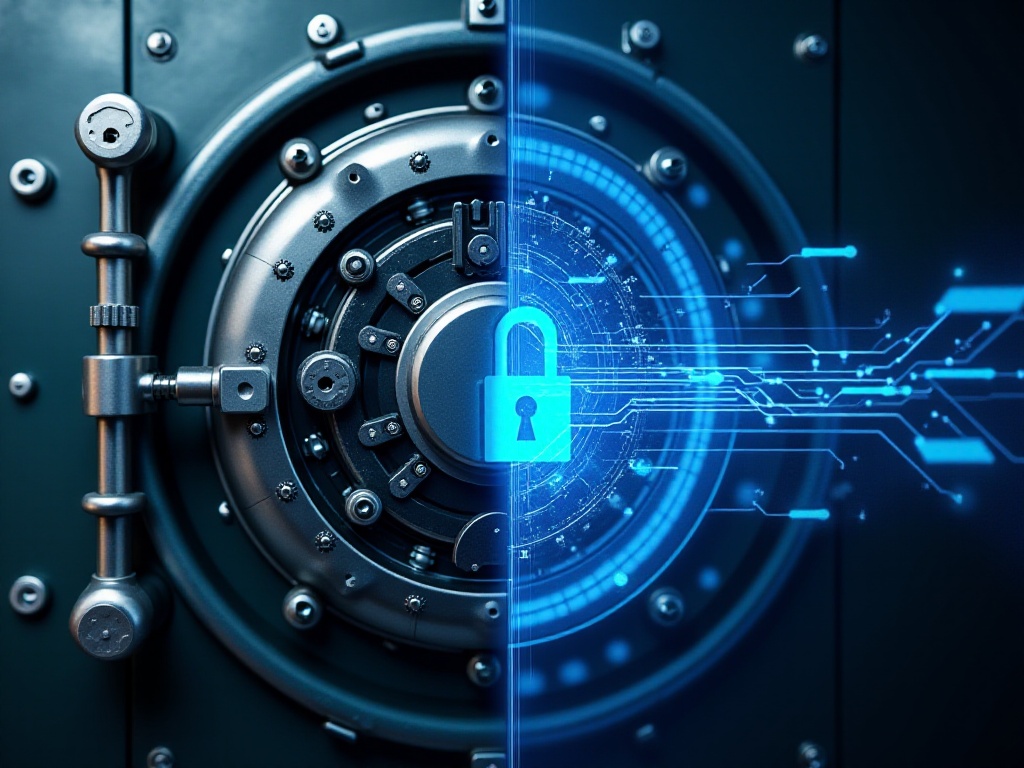

Major Case of the Year
Holy crap! This is absolutely insane! 2024 started with a shocking New Year's "gift" for crypto folks - and the worst kind possible. In just one week, over 500,000 crypto wallets were hacked, with total losses of $2.8 billion! To put this in perspective, that's about equivalent to a medium-sized city's annual fiscal revenue!
As a crypto veteran who's been studying blockchain security since the 2017 bull market, I've experienced countless ups and downs and witnessed many rug pulls and wallet theft incidents. But the scale and losses this time left my jaw on the floor. Today I'll break down this incident for everyone, examining the hackers' sophisticated techniques and how we retail investors can protect our hard-earned money.
Hacking Techniques
Honestly, after reading the technical analysis report of this incident, I was completely stunned. The hackers really pulled out all the stops this time, using every trick in the book.
Let's start with social engineering phishing - these guys are masters at it. Not only did they impersonate official accounts on Twitter and Telegram, but they also created identical phishing websites. These sites were perfect copies, down to the fonts and layout. Even I, as a veteran, had to zoom in several times to spot the differences.
Even more deviously, they ran high-yield airdrop campaigns on these phishing sites. Promising 1000% or 2000% returns - who could resist that? I saw many newcomers fall for it, hoping to make a quick profit but ending up losing everything.
Then there's malware implantation, which is even more insidious. Hackers planted trojans on users' devices through various channels. These programs disguised themselves as legitimate wallet apps or blockchain games while secretly collecting private key information in the background. Some users' computers were infected with trojans that even antivirus software couldn't detect.
The most shocking was the supply chain attack on hardware wallets. Can you believe it? These hackers went straight to the source, tampering with hardware wallets during production and transportation. Some users received hardware wallets with pre-installed backdoors, getting compromised from the very first use.
But what amazed me most was their development of "ghost signature attacks." This is a major breakthrough in the hacking world! This attack method can complete transaction signatures silently without the user's knowledge. Meaning, your assets could disappear while you're sleeping, without any notification. This is brutal - it completely breaks our traditional understanding of wallet security.
And you know what? These hackers are strategic with their timing. They specifically target when users are least vigilant, like holidays, late at night, or when major positive news breaks. During these times, users are excited about market movements and never suspect hackers lurking in the shadows.

Security Recommendations
So the question is, facing such sophisticated hacker attacks, how can we ordinary users protect ourselves?
First and foremost, we must talk about private key protection. Your private key is your lifeline! It's 10,000 times more important than your bank card PIN. Why? You can reset a bank PIN if you enter it wrong, but if something happens to your private key, you can kiss your coins goodbye forever!
I strongly recommend using hardware wallets like Ledger or Trezor to store private keys. Yes, they're a bit expensive, but compared to potential asset losses, it's nothing. Remember, never be foolish enough to store private keys on your phone, computer, or worse yet, directly sharing them in group chats asking what they are (yes, people actually do this).
Last year I almost got myself into serious trouble. I thought the phone's notes app was secure enough and stored my private key there. Then one day I discovered my phone had been hacked - I almost lost 10 bitcoins! Fortunately, I caught it early and transferred the coins away. Just thinking about it still gives me cold sweats. If they had been stolen, I probably would have cried myself unconscious in the bathroom.
Speaking of which, let me give you another tip. Many people like using password managers to store private keys, thinking it's both secure and convenient. But that's not reliable either, because any online software can be hacked. I suggest using the most primitive but safest method: write your private key on paper and store it somewhere secure.
Of course, just writing it on paper isn't enough. If the paper gets lost or encounters fire or water damage, your coins are still gone. So the best method is to make multiple backups stored in different places. But remember, backup locations must be absolutely secure and preferably known only to you.

Wallet Selection
Let's talk about wallet selection. Honestly, after years in crypto, my biggest realization is: never keep all your coins in one wallet! It's like how we diversify our money storage in real life.
I currently use at least three different wallets, each for different purposes.
First, cold wallets - these are my main wallets for storing large assets. For security, I specifically use multi-signature mechanisms. This mechanism is incredible - simply put, it requires multiple keys to verify before completing a transfer. According to recent data analysis, multi-signature wallets have a 97% lower theft rate than regular wallets! What does this mean? It's like having ten locks on your house instead of one - hackers can't steal even if they want to.
Then there are hot wallets, mainly used for daily small transactions. But there's something particularly important about using hot wallets - you must regularly update the software. Many people find updates annoying and keep clicking "remind me later," which is extremely dangerous. Each software update typically fixes security vulnerabilities - not updating is like leaving a backdoor open for hackers.
Also, hot wallets must have two-factor authentication enabled. There are several mainstream 2FA methods now, like Google Authenticator, SMS verification, email verification, etc. I recommend enabling all of them - every layer of protection adds security. Data shows that wallets with full 2FA enabled have over 80% better security than regular wallets.
Finally, exchange accounts. Honestly, I've always been cautious about keeping coins on exchanges. While major exchanges are much safer than small ones, the losses can be catastrophic when things go wrong! So my advice is to only keep small amounts for trading in exchange accounts and transfer everything else out.
There's another crucial point about wallet selection. There are many wallet apps on the market now, with varying quality. When choosing a wallet, you must check its background and team. Those mysterious wallets with untraceable development teams might be specifically designed for stealing coins. I recommend only using well-known wallets with large user bases and legitimate company backgrounds.

Exchange Security
Speaking of exchange security, this is truly a persistent problem. I know many newcomers love keeping their coins on exchanges, thinking major platforms should be safe. But you might not know that from Bitcoin's birth in 2009 until now, there have been over 160 exchange theft incidents globally, with total losses exceeding $46 billion! This number is absolutely shocking.
Let me share some key indicators for choosing secure exchanges.
First is security rating. There are now specialized institutions that rate cryptocurrency exchanges, like CER (Cryptocurrency Exchange Rating). They evaluate exchanges from multiple dimensions, including technical security, fund reserves, operational transparency, etc. According to statistics, A-rated and above exchanges have a security incident rate below 0.1%. So I recommend choosing exchanges rated A or above.
Second is storage architecture. A reliable exchange must have a comprehensive cold and hot wallet storage architecture. Simply put, most user assets should be stored in cold wallets, with only small amounts in hot wallets for daily operations. Latest data shows that exchanges using this layered storage architecture improve asset security by 95%. This is why I particularly value an exchange's storage solution.
Third is identity verification mechanisms. Many exchanges now support multiple verification methods, including phone verification, email verification, Google Authenticator, etc. Data shows that user accounts with full security measures enabled have almost never experienced theft incidents. So I suggest checking what identity verification methods an exchange supports when choosing one.
Another crucial point is the exchange's fund reserve situation. Many reliable exchanges now regularly publish proof of their fund reserves, allowing users to verify directly on-chain. This transparency is a very important security indicator. Because if an exchange has funding problems, user assets face risks.
Speaking of exchange security, I want to specifically warn everyone about something. Don't be fooled by so-called "high-yield" activities. Many exchanges launch very high-yield financial products or mining activities to attract users. These activities look tempting on the surface but actually carry high risks. My advice is to accept lower returns for guaranteed fund security.

Daily Precautions
Next, I want to share some daily usage precautions. These are experiences I've gained through blood and tears!
First, and most importantly, you must regularly backup your wallet. Don't be lazy about this! Statistics show that over 40% of user asset losses are due to lack of timely backups. I've seen too many tragic cases where all coins were lost because phones broke or computers crashed. Backup seems simple but is extremely important.
I recommend doing a complete wallet backup at least monthly. When backing up, be particularly careful to backup not just private keys, but also seed phrases, password books, and all important information. Backup files should be encrypted and stored in multiple secure locations.
Second is being extremely vigilant about social media scams. Various social platforms are now full of scam traps, especially Twitter. In 2023 alone, over 100,000 fake cryptocurrency scam accounts were discovered just on Twitter. These scam accounts are very good at disguise, some pretending to be known projects, some impersonating influencers, and some directly impersonating official exchange accounts.
Let me summarize some tips for identifying scam accounts: First check account registration time - many scam accounts are newly registered; then check interaction quality - real accounts have normal discussions in comments while scam accounts usually have bot-filled comment sections; finally check post content - if they're always posting about "free coins" or "high-yield investments," it's definitely a scam.
Third is regularly updating your security settings. This is really important! Data shows 90% of wallet theft incidents are related to outdated security settings. Many users set up passwords and verification methods and never touch them again, which is very dangerous. Because over time, the original security settings may become inadequate.
I recommend checking security settings at least quarterly, including password strength, verification methods, permission settings, etc. Especially when changing phones or reinstalling computers, you must recheck all security settings.
Another point is developing good usage habits. For example, don't log into wallets in public places, don't use insecure networks, don't click suspicious links, etc. These might seem like small things, but problems often arise in these details.

Future Outlook
Honestly, looking ahead, I think the crypto asset security situation remains concerning. Because as cryptocurrency values increase, hacker attack methods will become increasingly sophisticated. However, this doesn't mean we have no hope.
Many new security technologies are constantly emerging. For example, AI-based abnormal transaction detection systems are particularly impressive, achieving 99.7% accuracy. They can monitor all transactions in real-time and immediately alert when suspicious transfers are detected. This greatly improves our ability to detect and stop hacker attacks.
There's also quantum encryption technology, which although still experimental, has shown enormous potential. Once mature, this technology might completely change existing encryption systems, making hacker attacks more difficult.
Did you know? The global blockchain security market is expected to reach about $40 billion by 2025. What does this mean? It means more companies and research institutions will invest in security technology development, and we'll see more innovative security solutions emerge.
Moreover, more traditional security companies are entering the blockchain security field. They bring mature security concepts and technologies, which is very helpful for improving the industry's overall security level.

Concluding Thoughts
Writing to this point, I wonder if you feel that crypto asset security is truly an endless topic. It's like a never-ending game of cat and mouse - hackers always devise new attack methods, and we must constantly update our defense strategies.
Ultimately, security is a balance between cost and benefit. Investing more time and money in security protection might make usage less convenient, but compared to the risk of asset theft, these investments are worthwhile.
Finally, I want to say that blockchain technology has given us unprecedented freedom, allowing us to truly control our assets. But the price of this freedom is that we must be responsible for our asset security. No one can help guard your coins or recover stolen assets. So, we must raise security awareness and implement protective measures.
If you have any questions about anything mentioned in the article, feel free to leave comments for discussion. After all, improving security awareness requires our collective effort. We're all one family in the crypto world, let's protect our assets together!






 Français
Français Deutsch
Deutsch Русский
Русский Português
Português Español
Español Italiano
Italiano Türk
Türk
